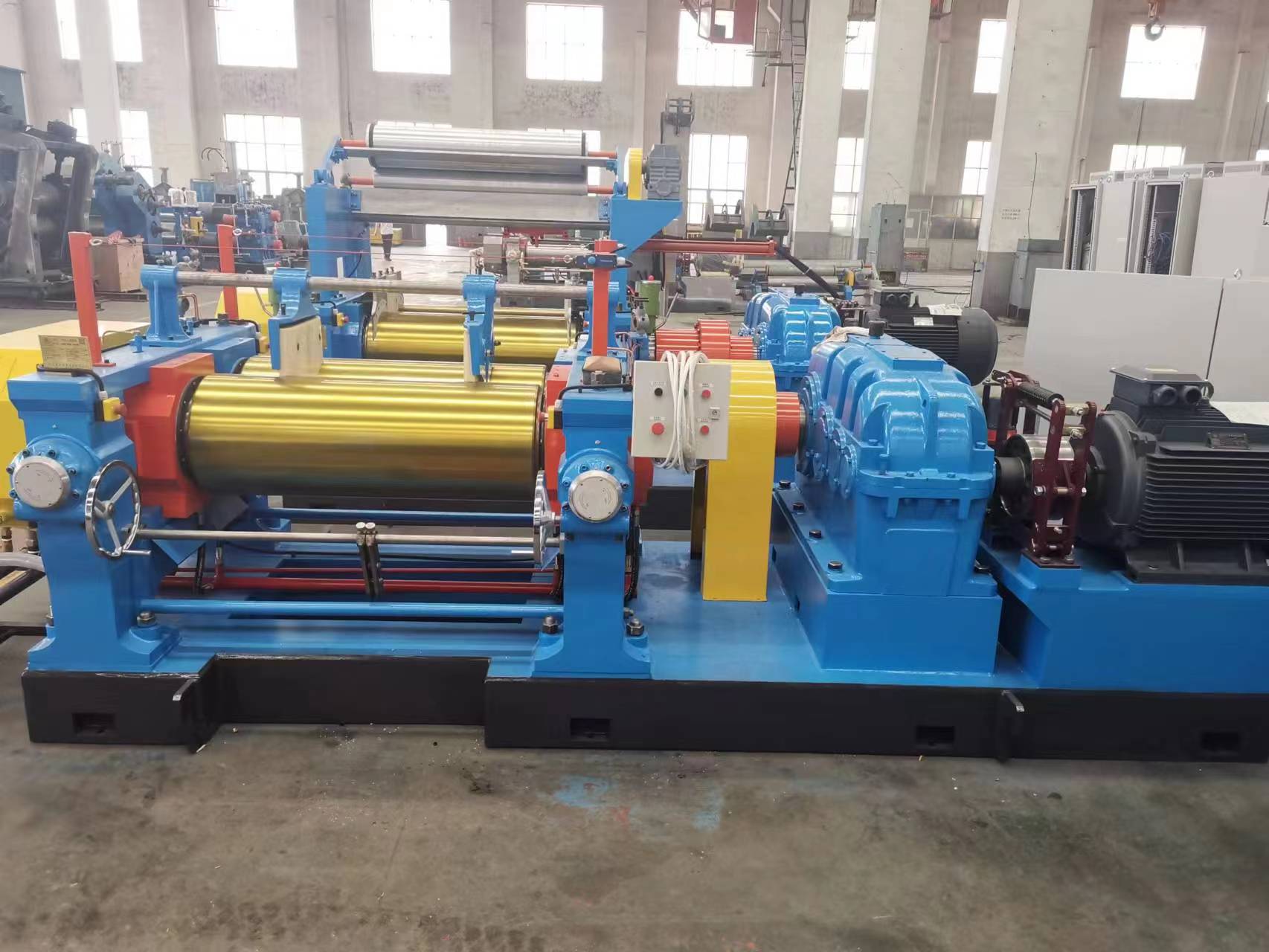Principle and application of rubber mixing machine: Introduction to open rubber mixing machine and rubber roller equipment
In the field of rubber manufacturing, the mixing process is crucial to ensure the quality and performance of rubber products. One of the most widely used equipment in the mixing process is the rubber mixer, especially the open mixer. This article takes an in-depth look at the working principle of the rubber mixer, its applications, and the role of rubber roller equipment in enhancing the mixing process.
Learn about rubber mixer
A rubber mixer is a machine used to mix rubber compounds and additives to obtain a homogeneous mixture. An open mixer is a special type of rubber mixer consisting of two large horizontally placed, counter-rotating drums. This design allows for efficient mixing of rubber materials, as the rubber is fed into the gap between the drums, where it is subjected to shear forces and mechanical work.
The operating principle of an open mixer is relatively simple. As the drums rotate, a high shear zone is created, breaking up the rubber and evenly distributing the additives throughout the mix. The rubber temperature can be controlled by adjusting the drum speed and gap, resulting in optimal mixing conditions. The design of an open mixer is also easily accessible to operators, allowing them to closely monitor the mixing process.
Key components of open mixer
The Open Compounder is equipped with several key components that enhance its functionality:
1. Drum: The main component of the mixer is usually made of hardened steel, designed to withstand wear and provide efficient mixing.
2. Drive system: The drum is driven by an electric motor, which drives the drum at a variable speed, thus achieving flexibility in the mixing process.
3. Temperature Control: Many modern mixers come with built-in heating and cooling systems to maintain the desired temperature during the mixing process.
4. Feeding system: It includes hoppers and chutes to facilitate the introduction of raw rubber and additives into the mixing zone.
5. Safety Features: Given the potential dangers of operating heavy machinery, open mixers are equipped with safety guards and emergency stop buttons to protect the operator.
Application of rubber mixer
Rubber mixers, especially open mixers, have a wide range of applications in the rubber industry. Some of the most common applications include:
1. Tire Manufacturing: The tire industry is one of the largest users of rubber mixers. The mixing process is critical to producing tire compounds that require specific properties such as durability, flexibility, and wear resistance.
2. Automotive Parts: Rubber parts used in automotive applications, such as seals, gaskets and hoses, also rely on the mixing capabilities of the rubber mixer to achieve the desired performance characteristics.
3. Industrial Products: Various industrial rubber products, including conveyor belts, rubber mats and flooring materials, are produced using open mixers to ensure consistent quality and performance.
4. Consumer goods: Rubber mixers are also used in the production of consumer goods such as rubber bands, toys and footwear, where the quality of the rubber compound directly affects the final product.
5. Special Applications: In addition to standard rubber products, compounders are used to produce special compounds, such as those for medical devices, sports equipment and high-performance applications.
The function of rubber roller equipment
Rubber roller equipment plays a vital role in the efficiency and effectiveness of the mixing process. These rollers are designed to provide optimal mixing conditions, ensuring that the rubber and additives are thoroughly mixed. The use of rubber rollers can enhance the mixing process in a number of ways:
1. Improved dispersion: Rubber rollers can help achieve better dispersion of additives within the rubber matrix, thereby improving material properties.
2. Reduce energy consumption: By optimizing the mixing process, rubber roller equipment can reduce the energy required for mixing, thereby saving costs for manufacturers.
3. Improve product quality: Using high-quality rubber rollers can achieve more uniform mixing, which is essential for producing high-performance rubber products.
4. Versatility: Rubber roller equipment can be adapted to a variety of mixing applications, making it a valuable asset to any rubber manufacturing plant.
in conclusion
Rubber mixers, especially open mixers, are essential equipment in the rubber manufacturing industry. They are able to effectively mix rubber compounds and additives, ensuring the production of high-quality rubber products suitable for a variety of applications. The integration of rubber roller equipment further enhances the mixing process, thereby improving dispersion, reducing energy consumption, and improving product quality. As the rubber industry continues to develop, efficient mixing processes will always be crucial, making rubber mixers the cornerstone of rubber manufacturing.
Post time: Jul-03-2025







